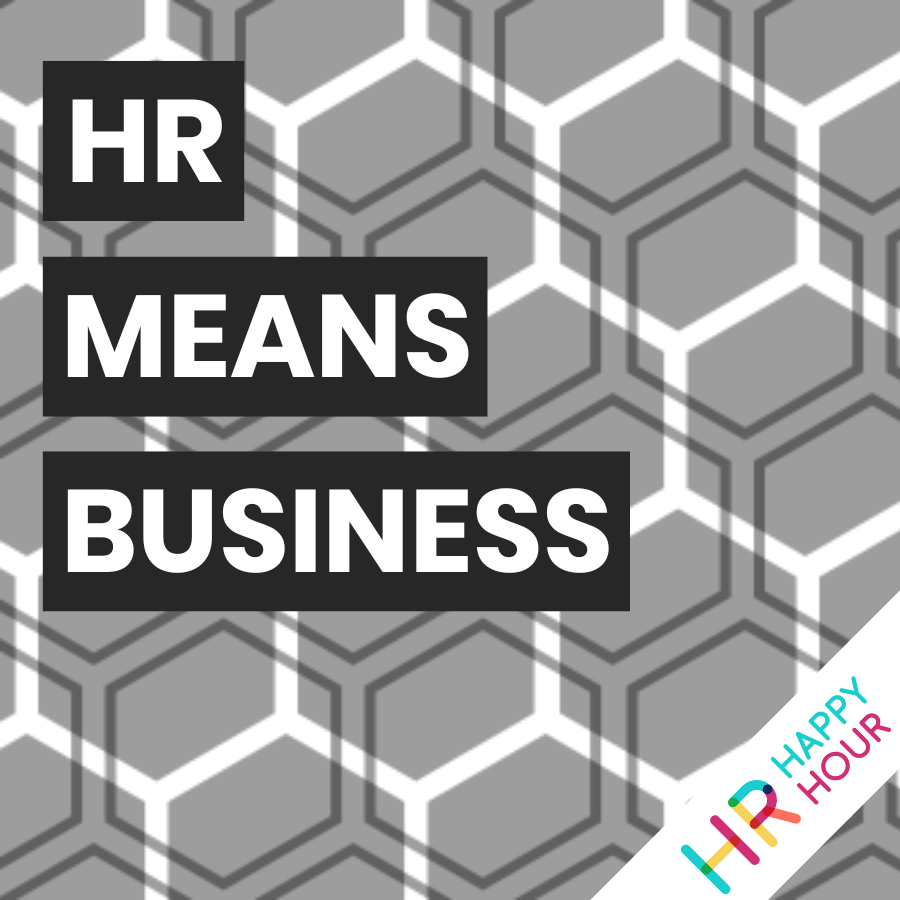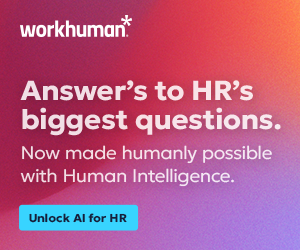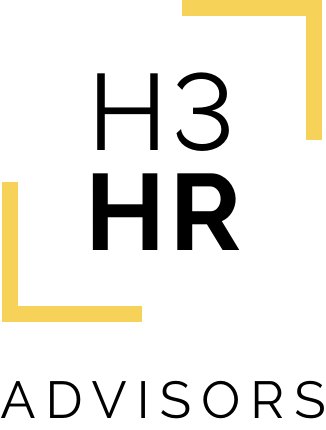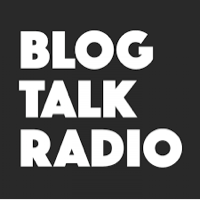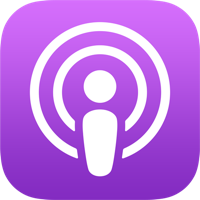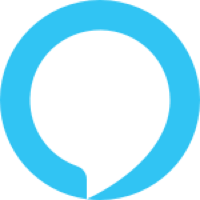HR Means Business 5: HR’s Role as Custodian of Culture, Belonging and Experience
Hosted by

Mervyn Dinnen
Analyst, Author, Commentator & Influencer
About this episode
HR Means Business 5: HR’s Role as Custodian of Culture, Belonging and Experience
Host: Mervyn Dinnen
Guest: Sally Sourbron, Chief People Officer at TravelPerk
In this episode Mervyn talks to Sally Sourbron, Chief People Officer at TravelPerk, a next-generation business travel platform pioneering the future of business travel. They talk about HR’s potential impact as a strategic growth lever – effectively as the business’ ‘magic ingredient’ – and cover culture, belonging, the creation of purpose-led experiences and the role of leaders.
– How does the HR function contribute to the organization
– HR’s reinvention of itself
– How to protect culture, and use it for growth opportunities
Thanks for listening! Remember to subscribe to all of the HR Happy Hour Media Network shows on your favorite podcast app!
Transcript follows:
Mervyn Dinnen 0:15
Hello everybody and welcome to the latest episode of the HR Means Business podcast. My name is Mervyn Dinnen, and it’s an absolute pleasure today to be able to talk to Sally Sourbron. I’m very interested in how HR can be a strategic growth lever and the role of HR plays in creating cultures of belonging. And Sally has had an interesting career to date. And I think has had some very interesting experience and views on this Sunday. Hello, and welcome to the podcast.
Sally Sourbron 0:44
Hello, Mervyn. Thank you for inviting me. It’s great to be here. I’m looking forward to our conversation.
Mervyn Dinnen 0:50
All right, Me too. Me too. Tell the listeners a little bit about your background.
Sally Sourbron 0:55
Yes, of course. So as you said, my name is Sally. I am an HR professional. I’ve been working in the industry for gosh, quite some time now. Certainly over 20 years. And I’ve had the pleasure to work in multiple industries and across multiple geographies, as well as also different functional representations across the HR function. Today, I find myself actually in a new role. I’ve been working for a unicorn scale up called TravelPerk, who are headquartered in Barcelona, where I am the Chief People Officer. So I suppose that every what many, let’s say, HR practitioners dream to sort of reach the number one in their function. And I suppose I’ve now reached that goal in my career.
Mervyn Dinnen 1:46
Congratulations. For your career to date, I would say yeah. How have you seen the HR function develop? How has it grown in terms of significance in terms of the role it plays? And where do you see the future development?
Sally Sourbron 2:01
So really, really interesting question. And if I think back to those beginning days, when I started in HR, actually, for an American corporate organization at their headquarters in Europe, I was starting in the very beginning position, which I think many people fall into, actually, when they join HR function, which was recruitment. And I joined the recruiting, the graduate recruiting team, because I was just passionate about sort of giving back and having that purpose and connecting with young students, because I was a recent graduate myself. And I don’t necessarily think people think through then, what’s the meaning of that HR function? How is that HR function contributing to the wider business, because it’s not like it’s the sexy functions of sales and marketing, where you can see the return on investment, and you’re winning the big customer deals, and, and so forth.
Sally Sourbron 2:52
But I think it was, I suppose, a quiet lease or two growing function in those days that would really sort of I think, stretch to now become certainly a growth lever of any, any organization. And I think the experiences that I started back then, if I think through to working within a large scale organization, such as GE, General Electric, it was a playground, certainly for the HR function in the sense of GE was servicing over 3000 300,000 employees globally, across multiple industry sectors. And literally, we had the opportunity in the HR function to trial by error, as well, I would say, new ideas, new concepts within HR. So it wasn’t just a back office function. And what GE did really well is it, it kind of made the back office function as sort of brilliant at Basic, so really had built something for scale, that it was enter service, keep the lights on across all those employees. And then what that meant was that in the other domains of HR, apart from HR operations, you were really able to, let’s say, step out of the norm, really be this strategic partner to the business that you were supporting. And I suppose that was the beauty in GE, in the way in which the HR function was set up, it had a voice within the business, it had created respect, it had commanded, let’s say, a presence at the leadership table with the CFO, with the CEO of any of those different business units.
Sally Sourbron 4:36
And that’s really where I think the strength of that strategic growth lever came into play. Now, in more recent years, if I think about my move into back into technologies, I moved and worked through the ranks of sort of Salesforce and then of course ServiceNow. More recently, you’ve seen a different shift then I think, in the way in which HR has then represented itself and reinvented itself. So again, And if you think back to the GE example, obviously having the basics, then the HR operational activity, keeping the lights on is happening. But in the technology world, it’s been happening through digital experiences now. So really all of that automation. And so therefore, the investment in the HR tech stack is critical, I think, to then give the same levers, as we mentioned around how then you move the HR support model, up through the leadership to really drive strategic initiatives and programs, very much focused on talent management, very much focused on obviously employee engagement and culture, all of that sort of embedding this whole element and sense of belonging that you talk to, and we can touch in some of those sort of ideas and concepts. Obviously, throughout conversation.
Mervyn Dinnen 5:47
I will do, no, it’s fascinating. I know on previous discussions you and I have had you talked about HR being the magic ingredient. So you’re you’re starting a new journey with TravelPerk. How are you hoping to make your HR function their magic ingredient?
Sally Sourbron 6:06
So, again, great, an interesting question, I suppose the magic ingredient, to some extent is an element of culture, as well as obviously, an element or large portion, let’s say, of the people. So the people for me, I always say is one of your strongest commodities in any business unit. So I think it’s about obviously having a strategy in place that obviously creates the culture that you you want to drive that obviously drives engagement discretionary effort, I’ve heard in previous podcasts that you’ve done that that’s obviously their integral. So if you get that backdrop, right, and then obviously, you add the magic ingredient, sort of the ingredient of your people, then I think that does create a certain sense of magic around what is created. So obviously, it my beginning of my journey and TravelPerk, I’m there at the moment, looking at our HR function, and just thinking through what is our three year people plan. Now, I’m quite lucky at Travel Planner, because obviously, as a travel management, stats organization, it’s it’s very much focused around obviously, seven star experience. So giving back to our customers that experience that they seek. And so for me, I’ve kind of now stolen that analogy.
Sally Sourbron 7:26
So the outward facing sort of strategy of Seven Stars experience, I’m kind of using now internally for the people function. So as a people function, how are we actually creating that seven star experience? And therefore it’s that three year roadmap? Or maybe in the first year? Do you know what it’s going to be a three star experience with a view the second year, five years, and then the third year seven star, seven star obviously being that world class, exceptional HR sort of persona. And so ultimately, it’s it’s about then aligning the different buckets underneath that journey, is what’s going to accelerate us. So if we think about everything that we’re doing around sort of our hiring engine, what are we doing around recruitment, talent, acquisition, talent brand, those sorts of things. So what’s that candidate experience, again, everything that we’re doing around people operations, so that backyard for scale, so where there’s automation there self service, again, that employee experience, layer, this thread, through those moments that matter for our employees, then, of course, it’s your whole rewards and compensation. So sort of helping employees understand the value proposition as well for them. And obviously, how they connect their benefits and their well being to obviously the wider organization, of course, then another element in TravelPerk, which I think is quite unique travelbook is they actually have this team called community. And I’ll touch on that as well, a little bit later, I think in the sense of community and development, what does actually community mean, and for me, community are the team that are sort of driving the strategic programs that embed our culture across our global organization. So development is also a part of what that community team are doing. And then pulling all of that together our HR business partners that are kind of the facilitators, let’s say of how these programs sort of land and how that works then with our leaders in driving this forward as our seven star experience that we’re creating, so hopefully get that gives a little bit of an overview of the journey at the moment it still is still early to say but I’ve got some some quick wins under my belt I would say.
Mervyn Dinnen 9:37
That’s great to hear. And it’s always good when you start somewhere new obviously if you can get those quick wins. We’re going to talk soon I think about leaders and managers but I suppose one of the things I’m interested in is the suppose the around culture and we’ve talked before about you know, how to kind of protect culture you know, hrs role in fostering in protecting culture and using culture as the lever for growth, how do you intend to go about that?
Sally Sourbron 10:08
Yeah, so it’s interesting, I think the vision I have is that all of us when you’re representing an organization are, in theory, a custodian of the culture that you belong to. And so it’s therefore about how do you amplify that message with your employees and your leaders. And that’s where, again, having a strategy, driving programmatic events are important to that. So obviously, the HR role I see in partnership with leadership is really that we are the facilitators, then of all of that, and really sort of holding true that sense of culture and sort of measuring it so that we understand that we are holding it and also improving when needed. But I would say that, one way to protect the culture and particularly if I give travelperk, as an example, we were 500 employees last year, we’re over 10 months later. So that is a huge, huge growth experience and current journey there. And so it’s really important about again, leading with purpose around what our culture is, and so really articulating and talking about it.
Sally Sourbron 11:21
So that’s obviously the best way to protect it. If you talk about it, if you celebrate and you recognize your culture, then that gives a sense of pride back to your employees, who then are obviously going to be custodians of that, and will then talk about that through their networks, obviously, through their new employees that we’re, we’re still hiring and bringing in through the door. And that’s really I think, for me, again, an essential ingredient, let’s say, in the strategy that you’re building is how can you then sort of communicate, talk about it, celebrate and recognize, and actually, I’ve started using a vehicle in trouble. So this, this is something I would say is, is a great win for me at this early stage. And again, that goes back to the basic ingredient, I’ve been given at TravelPerk, which is, of course, this this fabulous organization that’s been on this amazing growth journey, but has a very strong sense of purpose. And obviously, the purpose is about creating human connections in a healthy and sustainable way through and live in real life experiences. So obviously, that makes sense if you think externally from a travel management perspective. But of course, that can also apply internally as well to our organization, particularly if I think about holding true that sense of of culture, what does what does that mean for us, and so forth. And I think against a backdrop where we’ve come out of this two year period of COVID, where we’ve seen hyper growth across many tech organizations, where we’ve had this conundrum, that we’ve been debating in the HR world around the future of work, well, the new era work is here, we’re living in it, we’re in a hybrid, for the most part, or digitally first experience. And again, I think it’s about then being intentional around what this means for an organization’s culture. And this is what we’ve been doing TravelPerk and really using the, what we call the in real life, strategy and framework that we’ve created for the culture to really sort of embed and make sure that that cultural experience is felt across our different locations around the globe, for for maybe historical employees, or evergreens, as we call them, as well as our newbies. So that’s for me, I think a really interesting strategy and concept to think about is in real life.
Mervyn Dinnen 13:46
It is, you also talked about purpose led experiences. So how would you define them? And how are we supposed to HR set about kind of creating them?
Sally Sourbron 13:58
Yeah, so let me go, let me go further then into this in real life strategy, which I think then underpins the culture. And this framework, I think, is relevant, as I said to any organization. And the way in which we’ve been talking about in real life is essentially a way to inform our employees around when in real life is actually more suitable than maybe the digital experience. And so therefore, to drive that as an incentive for our employees, where we’re almost stating that the in real life is by creating this purpose led experience. So we want you to come to the office, to have this in real life experience, because there will be a purpose behind it. And that purpose could be of multiple elements. And if I think to the five pillars that we’ve created, the first is obviously reimagining a workplace. So really thinking about workspace says how can I use today, if you think back historically, I could turn them sometimes as the battery pen environments where you came into your cube, you sat at your cube, and therefore you work from nine till 530, or whatever your contract your holes were, we don’t want that we want an experience where people can come, they’re coming in to collaborate. They’re coming in to talk, to hear information, to understand new, new ideas to work together on product development, if you’re in engineering, so it’s really about having those spaces in those environments where people can then come and do that.
Sally Sourbron 15:36
The second element aside from workplace is something that I’ve been talking about, called a T pact. So really, if you think about hiring way of working, people have been talking about, hey, let’s come into an office maybe three days a week or two days a week, what I want to refer to as a team pack is, it’s like a social contract that you have with your manager, your team and your colleagues in how when you come and do in real life work together. And it’s simple, it may be as simple as a commitment to your weekly team days, or team meetings together, or one to ones or having a feedback and development conversation. So it goes back to what is that purpose of meeting together in real life. The third one is development as a pillar. So really thinking about personal development. So we really believe that this is I think, foundational, if it’s done in real life, you can obtain so much more from that experience. fourth pillar is community. And I touched on that before around really that cultural foundation. And really, that sense of belonging and our community team are really sort of working with what we call hub, hub champions. So really, the these are the individuals that are sort of owning the experience and culture in our different hubs around the globe. And we kind of bring them together. As a strategic program initiative, we give them budget, we work with them on the experiences that they’re driving the events that they’re creating those local sites.
Sally Sourbron 17:05
Underneath this pillar, you’ve also got volunteering work as well, so that teams that are driving volunteering, so again, we’re coming together in real life to give back in our local communities. And then of course, you’ve also got the whole sort of diversity angle. Again, if we think about our belonging groups, as we call them, they’re also coming together in their various communities around the globe, as well, sort of celebrating their different experiences. So that’s really a very, very powerful pillar for us around driving in your life. And then last but not least, I’ve got events that we call celebratory events, which are very much part of the travel perk world. So coming together, celebrating different cultural moments, as well as obviously celebrating company accomplishments and results as well. So those are the the five pillars, so they’re creating those purpose led experiences in real life for the organization.
Mervyn Dinnen 18:00
That is very impressive, Sally, there’s a lot there. And I can see that you are looking to create, I think, a great experience if I reuse the word. So the people they’re thinking about leaders, managers and leaders, you know, that they how I wouldn’t say how easy is it to sell it to them? But I mean, what is their role? They have to be able to amplify and embody the mission. So what’s your strategy, I suppose for bringing them with you on this?
Sally Sourbron 18:30
Yeah, and again, I think any any HR practitioner that’s driven sort of changing management programs, across an organization, ultimately, you start with communication and engagement. Okay, again, as we’ve talked about, amplify is a great word around how you communicate, to sort of recognize and create that sense of pride around what you’re doing, and track from a change management perspective. And so what, what what I do is I look at then the leadership as a, as a, as a community, and I actually split it out into two personas as I would call them. The first is really the leadership and that’s really your top 5% of senior leaders. And I think for me, they are really the extension of your C suite. A C suite cannot be everywhere, if it’s 5, 6, 7 leaders, whatever it might be at that top level, with with a growing organization, in hyper growth, it’s very, very hard to be sort of wrapping your arms across the entire organization, and that’s where you need to engage in that top 5% of your leaders create this community. We call it the executive leadership team ELT, again, bring them together, talk them through and engage them, give them that sense of purpose on what we’re doing as an organization around the company strategy around obviously, then the engagement and people initiatives. For me, I’m sort of bringing them on that journey. I’m sort of asking them for their feedback. They’re like a critical focus group that I’ve got a win over. And if I don’t win them over, take on that feedback, and sort of then pivot and change. So they are absolutely a critical part and this community, I bring together at the moment, I’d say every two months, I think in a normal, sort of slower scaling organization, you could do it every quarter. But again, what you’re trying to do is you’re imparting information, connecting them to the strategy, and then also driving their own personal development through experiences. Again, you’re bringing them through. So I think that’s certainly a stronghold. The other group is then your entire manager community, because they also need to sort of partner with you on the journey of change that you’re driving. So they are also very integral in how you’re working with them. And again, how you bring them on that change management journey, because ultimately, they will be at the coalface with the employee population, bringing them through whatever change or whatever, let’s say creativity or strategic initiative, driving.
Mervyn Dinnen 21:11
Okay. Well, listen, it sounds like you’ve got some fantastic plans ahead. For TravelPerk, it sounds like you made a really great start. And it’s been a pleasure to actually talk to you and hear more about them. I think that a lot of the conversations that we have around the HR space into this, don’t necessarily go into the kind of depth that you’ve been able to go here. So I think for listeners, this will be very, very useful, and a good insight to how to, I think, create and build this culture of belonging and to take the leaders with you and to really, I suppose align people with the purpose and to give them the experience, which, you know, again, is is what employees increasingly want want from work. So, Sally, it’s been a pleasure to talk to you. I wish you lots of luck, and hopefully, we will speak again soon.
Sally Sourbron 22:02
Thank you, Mervyn. I thoroughly enjoyed the conversation.
Transcribed by https://otter.ai
Talk to us
If you want to know more about any aspect of HR Happy Hour Media Network, or if you want to find out more about a show topic, then get in touch.

